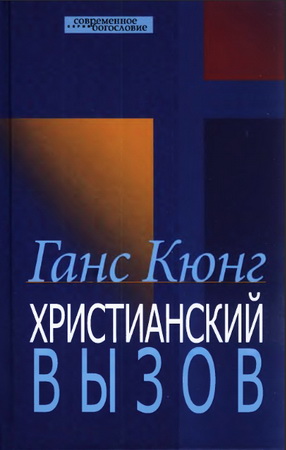
Cambridge Companions - Religion - General Interest

The masterpiece of Sienese painting known as The Creation of the World and the Expulsion from Paradise by Giovanni di Paolo di Grazia is a fitting place to begin a consideration of the relationship between Christianity and the environment (Figure 1.1). One way to read the painting is to understand it as simultaneously representing two elements of the complicated relationship that Christianity’s adherents have to the natural world of which they are a part. On the top left of the panel, once part of a multipanelled predella, God the Father is depicted in the act of creation. Surrounded by twelve cherubim, he is suspended above a celestial globe; a schematic rendering of the universe. The concentric circles represent the constellations of the zodiac, the known planets, and the four elements. At its centre is a mappamondo showing the physical features of the terrestrial world. Christian theology has often understood creation as a divine gift, a physical manifestation of God’s goodness. At different times, Christians have understood it as a book of divine revelation from which to learn, a gift to nurture and steward, a wild garden in need of cultivation and betterment, and as a resource for the improvement of the human condition. These ideas have informed, and continue to inform, our relationship with the environment. Christianity has shaped the collective understanding of nature for countless individuals, both within and without the religion, directly and indirectly, and affected everything from environmental policy to resource extraction.
On the right half of the panel is the Garden of Eden, with its four rivers issuing from the ground in the lower portion, and its fecund vegetation in the upper section symbolising the sinless prelapsarian state of humanity. The action depicts the expulsion of Adam and Eve from the garden, with the nakedness and human form of the angel thought to symbolise deep compassion for the fallen state of humanity. This story of the goodness of creation and human alienation from it was then completed in the next panel of the predella, which depicts a final stage of reconciliation in the garden of Paradise (Figure 1.2). Here saints and angels are shown embracing one another. At their feet, rabbits silflay unconcerned among the flowers, while the fruited trees, whose canopies fill the top of the panel, share a suggestive similarity with those depicted in Eden.
The Cambridge Companion to Christianity and the Environment
Edited by Alexander J. B. Hampton and Douglas Hedley, 2022
- 1. Introduction. Alexander J. B. Hampton
Part I. Concepts
- 2. Naturalism, Supernaturalism, and Our Concern for Nature. Fiona Ellis
- 3. From Disenchantment to Enchantment: Mind, Nature, and the Divine Spirit. Jörg Lauster
- 4. Human and Nonhuman Animals from Secular and Sacred Perspectives. Charles Taliaferro
- 5. Anthropocentrism, Biocentrism, Stewardship and Co-Creation. Robin Attfield
- 6. Participation and Nature in Christian Theology. Andrew Davison
- 7. The Book of Nature. Jacob Holsinger Sherman
Part II. Histories
- 8. Environmental Perspectives in Ancient Greek Philosophy and Religion. Crystal Addey
- 9. Medieval Nature and the Environment. Kellie Robertson
- 10. Natural Philosophy in Early Modernity. Nathan Lyons
- 11. Protestantism, Environmentalism, and Limits Growth. Mark Stoll
- 12. Romanticism, Transcendentalism, and Ecological Thought. Laura Dassow Walls
- 13. Contemporary Religious Ecology. Sean J. McGrath
Part III. Engagements
- 14. The Sublime and Wonder. Emily Brady
- 15. Religious Traditions and Ecological Knowledge. Michael S. Northcott
- 16. Venerating Earth: Three Sacramental Perspectives. Jame Schaefer
- 17. Nature and Aesthetics: Methexis, Mimēsis and Poiēsis. Alexander J. B. Hampton
- 18. Sophia and the World Soul. Douglas Hedley
- 19. Creation and Gender: A Theological Appraisal. Willemien Otten
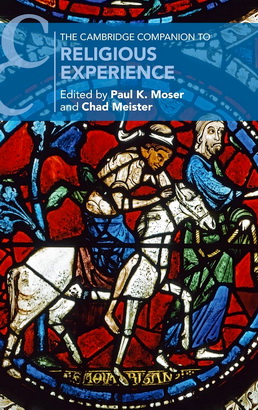
The Cambridge Companion to Religious Experience
Edited by Paul K. Moser and Chad Meister, 2020
- Introduction: Religious Experience. Paul K. Moser, Chad Meister
Part I - Characterizing Religious Experience: Interdisciplinary Approaches
- 1 - Psychology of Religion Approaches to the Study of Religious Experience. Ann Taves
- 2 - Philosophy of Religion Approaches to the Study of Religious Experience. Phillip H. Wiebe
- 3 - Theology, Religious Diversity, and Religious Experience. Gwen Griffith-Dickson
Part II - Religious Experience in Traditional Monotheism
- 4 - Illumined by Meaning: Religious Experience in the Book of Job. Howard Wettstein
- 5 - Religious Experience in Early Christianity. James D. G. Dunn
- 6 - Religious Experience in Traditional Islam. William C. Chittick
Part III - Religious Experience Outside Traditional Monotheism
- 7 - Religious Experience in Ancient Confucianism and Daoism. Xinzhong Yao
- 8 - Religious Experience in Buddhism. David Burton
- 9 - Rāmānuja’s Eleventh Century Hindu Theology of Religious Experience: An Informative, Performative, Transformative Discourse. Francis X. Clooney
Part IV - Prominent Themes and Challenges
- 10 - Exploring the Nature of Mystical Experience. Steven T. Katz
- 11 - Miraculous and Extraordinary Events As Religious Experience. Fiona Bowie
- 12 - Evil, Suffering, and Religious Experience. Michael L. Peterson
- 13 - Naturalism and Religious Experience. Willem B. Drees
- 14 - Meaning and Social Value in Religious Experience. Mark Owen Webb
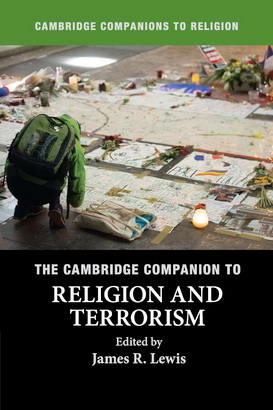
The Cambridge Companion to Religion and Terrorism
Edited by James R. Lewis, 2017
Introduction. JAMES R. LEWIS
- 1. Does Religion Cause Terrorism? MARK JUERGENSMEYER
- 2. Religion, Violence, Nonsense, and Power. WILLIAM T. CAVANAUGH
- 3. Discounting Religion in the Explanation of Homegrown Terrorism: A Critique. LORNE L. DAWSON
- 4. Religion, Radicalization and the Causes of Terrorism. TOM MILLS AND DAVID MILLER
- 5. The Role of the Devoted Actor in War, Revolution, and Terrorism. SCOTT ATRAN
- 6. Girard on Apocalypse and Terrorism. ESPEN DAHL
- 7. Rational Choice and Religious Terrorism: Its Bases, Applications, and Future Directions. STEPHEN NEMETH
- 8. Terror as Sacrificial Ritual? A Discussion of (Neo-)Durkheimian Approaches to Suicide Bombing. LORENZ GRAITL
- 9. Imitations of Terror: Applying a Retro Style of Analysis to the Religion-Terrorism Nexus. JAMES R. LEWIS
- 10. The LTTE: A Nonreligious, Political, Martial Movement for Establishing the Right of Self-Determination of Īlattamils. PETER SCHALK
- 11. The Role of Religion in al-Qaeda ’ s Violence. PIETER NANNINGA
- 12. Meanings of Savagery: Terror, Religion and the Islamic State. PIETER NANNINGA
- 13. Where ’ s Charlie? The Discourse of Religious Violence in France Post-7/1/2015. PER-ERIK NILSSON
- 14. Understanding the Threat of the Islamic State in Contemporary Kyrgyzstan. MEERIM AITKULOVA
- 15. Terror and the Screen: Keeping the Relationship of Good and Bad Virtual. CHRISTOPHER HARTNEY
- 16. Understanding Falun Gong ’ s Martyrdom Strategy as Spiritual Terrorism. JAMES R. LEWIS AND NICOLE S. D’AMICO
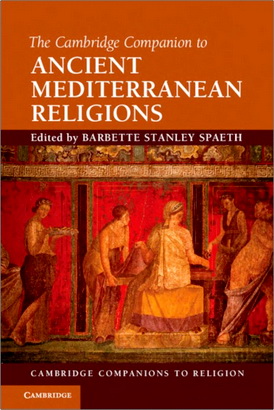
The Cambridge Companion to Ancient Mediterranean Religions
Edited by Barbette Stanley Spaeth, 2013
- Introduction. Barbette Stanley Spaeth
Part I
- 1. Egypt. Emily Teeter
- 2. Mesopotamia. Beate Pongratz-Leisten
- 3. Syria-Canaan. Shawna Dolansky
- 4. Israel. Mayer I. Gruber
- 5. Anatolia. Billie Jean Collins
- 6. Iran. W. W. Malandra
- 7. Greece. Jennifer Larson
- 8. Rome. Celia E. Schultz
- 9. Early Christianity. H. Gregory Snyder
Part II
- 10. Violence. Bruce Lincoln
- 11. Identity. Kimberly B. Stratton
- 12. The Body. Elizabeth A. Castelli
- 13. Gender. Ross Shepard Kraemer
- 14. Visuality. Robin M. Jensen
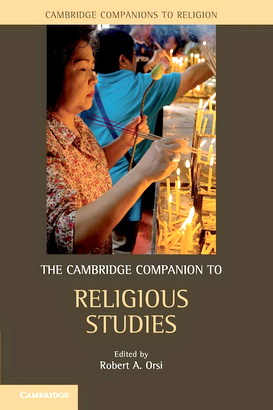
The Cambridge Companion to Religious Studies
Edited by Robert A. Orsi, 2012
- Introduction. Robert Orsi
Part one - Religion and religious studies: the irony of inheritance
- 1 - On sympathy, suspicion, and studying religion: historical reflections on a doubled inheritance. Leigh Schmidt
- 2 - Thinking about religion, belief, and politics. Talal Asad
- 3 - Special things as building blocks of religions. Ann Taves
- 4 - The problem of the holy. Robert Orsi
Part two - Major theoretical problems
- 5 - Social order or social chaos. Michael Puett
- 6 - Tradition: the power of constraint. Michael Satlow
- 7 - The text and the world. Anne Blackburn
- 8 - On the role of normativity in religious studies. Thomas Lewis
- 9 – Translation. Martin Kavka
- 10 - Material religion. Matthew Engelke
- 11 - Theology and the study of religion: a relationship. Christine Helmer
Part three - Methodological variations
- 12 - Buddhism and violence. Bernard Faure
- 13 - Practicing religions. Courtney Bender
- 14 - The look of the sacred. David Morgan
- 15 - Reforming culture: law and religion today. Winnifred Sullivan
- 16 - Sexing religion. R. Griffith
- 17 - Constituting ethical subjectivities. Leela Prasad
- 18 - Neo-Pentecostalism and globalization. Marla Frederick
- 19 - Religious criticism, secular critique, and the “critical study of religion”: lessons from the study of Islam. Noah Salomon, Jeremy Walton

The Cambridge Companion to Miracles
Edited by Graham H. Twelftree, 2011
- Introduction: Miracle in an age of diversity. Graham H. Twelftree
Part I - Fundamental issues
- 1 - What is a miracle? David Basinger
- 2 - The meanings of miracle. Robert A. Larmer
Part II - Miracles in antiquity and the Middle Ages
- 3 - Miracles in the Hebrew Bible. R. Walter, L. Moberly
- 4 - Miracles in the Greek and Roman world. Robert Garland
- 5 - Miracles in Second Temple and early rabbinic Judaism. Lidija Novakovic
- 6 - The miracles of Jesus. Barry L. Blackburn
- 7 - Miracles in early Christianity. James Carleton Paget
- 8 - Miracles In The Middle Ages. Benedicta Ward
Part III - Miracles and major religions
- 9 - Miracles in traditional religions. Fiona Bowie
- 10 - Miracles in Hinduism. Gavin Flood
- 11 - Miracles in Islam. David Thomas
- 12 - Tales Of Miraculous Teachings: Miracles In Early Indian Buddhism. Rupert Gethin
- 13 - Miracles in Christianity. Ralph Del Colle
- 14 - Miracles in Jewish philosophy. Kenneth Seeskin
Part IV - Miracle today
- 15 - Issues in the history of the debates on miracles. Colin Brown
- 16 - Philosophers on miracles. Michael P. Levine
- 17 - Patient belief in miraculous healing: positive or negative coping resource? Niels Christian Hvidt
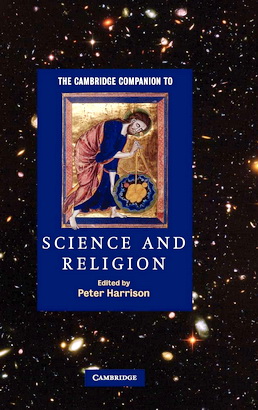
The Cambridge Companion to Science and Religion
Edited by Peter Harrison, 2010
- Introduction. Peter Harrison
Part I. Historical interactions
- 1. The fate of science in patristic and medieval Christendom. David C. Lindberg
- 2. Religion and the Scientific Revolution. John Henry
- 3. Natural theology and the sciences. Jonathan R. Topham
- 4. Religious reactions to Darwin. Jon H. Roberts
- 5. Science and secularization. John Hedley Brooke
Part II. Religion and contemporary science
- 6. Scientific creationism and intelligent design. Ronald L. Numbers
- 7. Evolution and the inevitability of intelligent life. Simon Conway Morris
- 8. God, physics and the Big Bang. William R. Stoeger, SJ
- 9. Psychology and theology. Fraser Watts
- 10. Science, bioethics and religion. John H. Evans
Part III. Philosophical perspectives
- 11. Atheism, naturalism and science: three in one? Michael Ruse
- 12. Divine action, emergence and scientific explanation. Nancey Murphy
- 13. Science, God and cosmic purpose. John Haught
- 14. Ways of relating science and religion. Mikael Stenmark
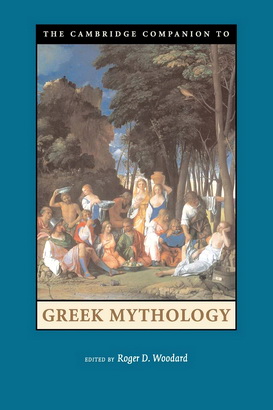
The Cambridge Companion to Greek Mythology
Edited by Roger D. Woodard, 2007
- Introduction: Muthoi in Continuity and Variation. ROGER D. WOODARD
Part 1: Sources and Interpretations
- 1. Lyric and Greek Myth. GREGORY NAGY
- 2. Homer and Greek Myth. GREGORY NAGY
- 3. Hesiod and Greek Myth. ROGER D. WOODARD
- 4. Tragedy and Greek Myth. RICHARD BUXTON
- 5. Myth in Aristophanes. ANGUS BOWIE
- 6. Plato Philomythos. DISKIN CLAY
- 7. Hellenistic Mythographers. CAROLYN HIGBIE
Part 2: Response, Integration, Representation
- 8. Greek Myth and Greek Religion. CLAUDE CALAME
- 9. Myth and Greek Art: Creating a Visual Language. JENIFER NEILS
- 10. Mythic Landscapes of Greece. ADA COHEN
- 11. Politics and Greek Myth. JONATHAN M. HALL
- 12. Ovid and Greek Myth. A. J. BOYLE
Part 3: Reception
- 13. Women and Greek Myth. VANDA ZAJKO
- 14. Let Us Make Gods in Our Image: Greek Myth in Medieval and Renaissance Literature. H. DAVID BRUMBLE
- 15. ‘Hail, Muse! et cetera’: Greek Myth in English and American Literature. SARAH ANNES BROWN
- 16. Greek Myth on the Screen. MARTIN M. WINKLER
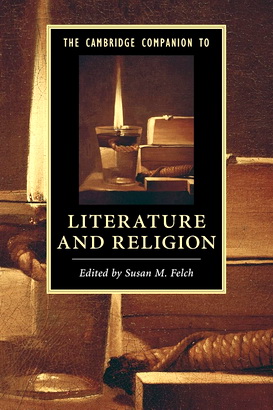
The Cambridge Companion to Literature and Religion
Edited by SUSAN M. FELCH, 2016
- Introduction. Susan M. Felch, Calvin College
PART I - READING PRACTICES
- 1 - Theological Reading. Rowan Williams, Magdalene College, Cambridge
- 2 - Confessional Reading. James Matthew Wilson, Villanova University
- 3 - Postsecular Reading. Zhange Ni, Department of Religion
PART II - INTERSECTIONS
- 4 – Ethics. Susan M. Felch, Calvin College
- 5 – Dwelling. Julia Reinhard Lupton, University of California
- 6 – Imagination. Matthew Potts, Harvard Divinity School, Cambridge
- 7 – Sacrifice. Michon M. Matthiesen, University of Mary
- 8 – Repetition. Susannah Brietz Monta, University of Notre Dame
PART III - TRADITIONS
- 9 – Hinduism. Cleo Kearns, New York University
- 10 – Buddhism. Richard K. Payne, Institute of Buddhist Studies
- 11 – Judaism. Susan Handelman, Bar-Ilan University
- 12 - Eastern Orthodoxy. Lori Branch, University of Iowa, Ioana Patuleanu, independent scholar
- 13 - Roman Catholicism. Paul J. Contino, Pepperdine University
- 14 – Islam. Mustansir Mir, Youngstown State University
- 15 – Protestantism. Willie James Jennings, Yale Divinity School
- 16 - World Christianity. Susan Vanzanten, Seattle Pacific University
 The Cambridge Companion to Religion and War
The Cambridge Companion to Religion and War
Edited by Margo Kitts. – Cambridge: Cambridge University Press, 2023. – 489 p.
ISBN 978-1-108-83544-2 Hardback
ISBN 978-1-108-79343-8 Paperback
The Cambridge Companion to Religion and War – Contents
List of Contributors page
Preface
Introduction: Exploring Religion and War. MARGO KITTS
Part I. Classical Foundations
- 1 Biblical Paradigms of War in History and Eschatology. JOHN J. COLLINS
- 2 Early Christianity and War. PAUL MIDDLETON
- 3 Fighting and Martial Valor in Islamic Thought. ASMA AFSARUDDIN
- 4 Hinduism and War. KAUSHIK ROY
- 5 Buddha in the Ring of Fire: The Buddhist Ethics of Warfare. STEPHEN JENKINS
- 6 Sikhism: Exploring the Notion of a Righteous War (Dharam Yudh). PASHAURA SINGH
- 7 Religion and War in Traditional China. BAREND TER HAAR
- 8 Buddhism and War in Premodern Japan. BRIAN A. VICTORIA
Part II. Just War
- 9 Judaism and the Ethics of War. REUVEN KIMELMAN
- 10 The Idea of Just War in Christian Thought from the Age of Augustine through the Early Modern Period. JAMES TURNER JOHNSON
- 11 Islam and the Just War Tradition: Postclassical Developments. DAVID COOK
- 12 Is There a Hindu Just War? TORKEL BREKKE
- 13 Buddhist Just War Traditions. KRISTIN SCHEIBLE
Part III. Religious Nationalism
- 14 War in Religious Zionism. ROBERT EISEN
- 15 Christian Nationalism and Millennialism in the USA. ANGELA M. LAHR
- 16 The Elusive Dream of Pan-Islamism. MOHAMMED M. HAFEZ
- 17 Killing for the Hindu Nation: Hindu Nationalism and Its Violent Excesses. KATHINKA FRØYSTAD
- 18 Nationalism, Violence and War in Myanmar’s Theravāda Buddhist Context. MATTHEW J. WALTON
Part IV. Featured Conflicts
- 19 Christian Crusading, Ritual, and Liturgy. M. CECILIA GAPOSCHKIN
- 20 A Paradigm of Pious Jihād in the Muslim Ethos. OSMAN LATIFF
- 21 Fierce Goddesses of India: Durga and Kali. JUNE MCDANIEL
- 22 The Demonological Framework of the Heavenly Kingdom of Great Peace. BAREND TER HAAR
- 23 War Outside the State: Religious Communities, Martiality, and State Formation in Early Modern South Asia. ANNE MURPHY
Index
 Philip C. Almond – The Antichrist: A New Biography
Philip C. Almond – The Antichrist: A New Biography
Cambridge: Cambridge University Press, 2020. – 357 p.
ISBN 978-1-108-47965-3
Philip C. Almond – The Antichrist: A New Biography – Contents
List of Plates page
Acknowledgements
Prologue
1 The Origins of the Antichrist
- Tradition - Millennial Moments - The Life of the Antichrist - ‘The Antichrist’ Arrives - Eschatology and the Antichrist - The Man of Lawlessness and the Son of Perdition - The Dragon and the Beasts - False Prophets, Messiahs, and a World Deceiver - The Eschatological Tyrant
2 The Story Begins
- Irenaean Innovations - Variations on an Irenaean Theme - Nero and the Double Antichrists - The Son of Satan? - To See Him Was to Know Him
3 The Antichrist, East and West
- The Antichrist Within - The Antichrist, Then and Now! - The Antichrist, Immanent and Imminent - Simon, the Magical Antichrist - The Last World Emperor - Gog and Magog - In the Meantime!
4 Antichrists, Present and Future
- Muhammad the Antichrist - Al-Dajjal, the Deceiver - Armilus, the Jewish Antichrist - The Antichrist of Roger de Hoveden - Apocalypse Maybe? - Sexy Beast - Magnus Antichristus
5 Of Prophets, Priests, and Kings
- Antichrists, Regal and Papal - The Antichrist Mysticus - Mystical Prophets and an Angelic Pope - The Radical Antichrist
6 The Antichrist Divided
- The Return of Adso’s Antichrist - The Magisterial Antichrist - Revisiting the Book of Revelation - The Empire Strikes Back - The Antichrist of the Radical Reformation
7 Antichrists – Papal, Philosophical, Imperial
- The ‘Scientific’ Antichrist - Sceptics and Believers - French Antichrists - Back to the Futurists - Deconstructing the Antichrist - The Floating Signifier
Epilogue A Brief Meditation on History
Bibliography
Index



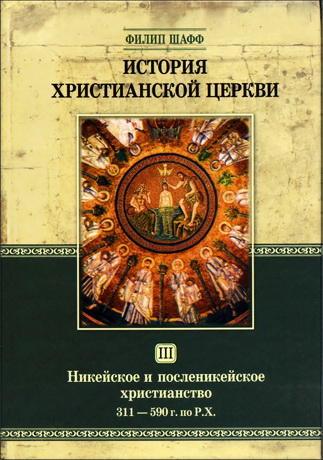
Комментарии
Пока нет комментариев. Будьте первым!